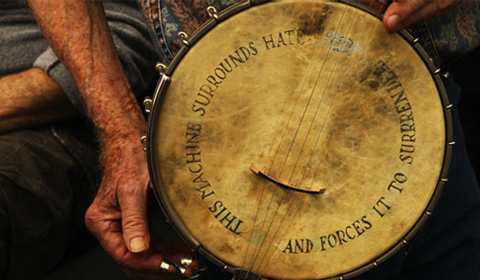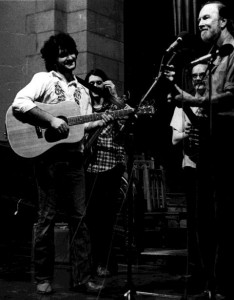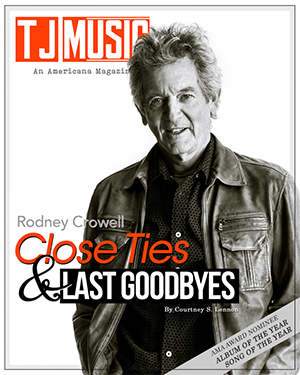Remembering Pete Seeger: A Time To Sing
By Terry Paul Roland, Staff Writer
“He passed away, that doesn’t mean he’s gone.” Arlo Guthrie
Sometimes it seems life’s journey is a series of circles. Our cultural heroes sit uncomfortably on a pedestal we make for them. When we have the opportunity to get to know our heroes, the once famous legends in our eyes become human with strengths and flaws like the rest of us. Of course, that’s because they are the ‘rest of us,’ and that has never rang as true as in the life and legacy of Pete Seeger.
In the case of multi-instrumentalist, Matt Cartsonis who had a 30 year friendship with Pete Seeger, the circle became complete on January 27th when the man who was once his hero, then became his mentor and his friend, quietly died at the seasoned and content old age of 94.
During an afternoon coffeehouse meeting with Cartsonis just two days after Seeger’s passing, he generously shared his experience and his lifelong impressions of the man who did more than anyone to shape his life. With a bittersweet smile that betrayed his own grief, Cartsonis said, “I just can’t conceive of the world without Pete Seeger. No one could have done what Pete did.”
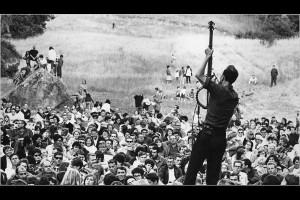 What did Seeger do? He was a celebrated artist who had no sense of his own celebrity. His often ego-less presence made many of his greatest achievements seem quite anonymous. It was the way he preferred it. Seeger galvanized folk music in the early part of the 20th century in a way that made it accessible for generations to come. He sang about the ideals we came accustomed to hearing from folk singers over the years. It’s easy to forget that it was Pete, along with Woody Guthrie, Lee Hayes and others who first defined songs about peace and tolerance and understanding as a way of life. Pete did more than just about anyone to create the template for the American folk song. Songs like “Where Have All The Flowers Gone,” “Turn, Turn, Turn” and “We Shall Overcome,” became the musical reference point for generations of people fighting oppression.
What did Seeger do? He was a celebrated artist who had no sense of his own celebrity. His often ego-less presence made many of his greatest achievements seem quite anonymous. It was the way he preferred it. Seeger galvanized folk music in the early part of the 20th century in a way that made it accessible for generations to come. He sang about the ideals we came accustomed to hearing from folk singers over the years. It’s easy to forget that it was Pete, along with Woody Guthrie, Lee Hayes and others who first defined songs about peace and tolerance and understanding as a way of life. Pete did more than just about anyone to create the template for the American folk song. Songs like “Where Have All The Flowers Gone,” “Turn, Turn, Turn” and “We Shall Overcome,” became the musical reference point for generations of people fighting oppression.
His life was marked by its diversity and refusal to judge others. With Woody Guthrie (and at his urging) Pete hopped freight trains. He reached out to anyone who would listen, not ideology or political propaganda, but with the pure joy of the song. He went to labor camps, hobo jungles, union hall meetings, elementary schools, universities, churches and hospitals. In 2009, he stood on the steps of the Lincoln Memorial and sang all of the verses to “This Land Is Your Land,” uncensored, with lyrics that would inspire while they pointed to the ironic absurdity of the plight of the poor. Ironically, it was on the inauguration day of our first African-American president.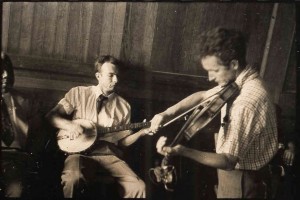
In the most divisive and controversial of times, the McCarthy era, when artists were fearing for their careers and freedom, Pete stood up for free-speech by refusing to name his friends with communist associations or to disavow his own political leanings. When he was blacklisted from every available venue a folk singer could possibly perform, he took his songs and stories to schools and played his music for children and young adults in the universities throughout the United States. This was one of the major currents that, a few years later, would give birth to the folk music renewal of the early 60’s that would coincide with the Civil Rights Movement. Just when the HUAC thought they had heard the last of Pete Seeger in 1950, “Where Have All The Flowers Gone,” hit the national charts courtesy of The Kingston Trio.
He continued to sing and eventually, with the help of successful folk/country based singers like the Smothers Brothers and Johnny Cash, he broke the back of the dated blacklist over ten years after Joe McCarthy had succumbed to alcoholism and an early death. Pete did it as well: with a minimum of judgement, with inclusiveness, courage, generosity and compassion. Pete Seeger was that rare activist with a sense of humor and a genuine love for even those who differed from his beliefs and a refusal to believe the worst of anyone. In a recent interview with Time magazine, folksinger, Arlo Guthrie said, “A lot of people ascribe political reasons to his becoming involved in different causes, but they were bigger than that. They were not an ideology; they were part of his soul, and part of the American soul.”
For Matt Cartsonis, there never was a time when he couldn’t remember Pete. A self-described ‘red-diaper’ baby – a child of folk music loving, left leaning parents.
“When I was a kid, I owned a copy of Woody’s Songs to Grow On,” Cartsonis laughs.
He also grew up hearing Seeger’s music and like many folk music loving baby-boomers, Seeger was an established fact in the fabric of his life.
It was a correspondence about steel drums, that would give Cartsonis the opportunity to join Seeger at his home.
“I wrote him a letter when I was working with troubled kids in Key West, “Cartsonis recalls. “He introduced me to the steel drum through a book he had written in the late-50’s.” He explained. “I wrote him a letter. Pete had said it was his biggest headache that he’d get mail and couldn’t answer all of them. I didn’t expect a response. He wrote me back! I nearly soiled my trousers!” he laughs.
“When I showed up at the Clearwater Annual Meeting, my friend, Geoff Brown said he’d introduce me to ‘Pops.’ The first thing Pete said to me was, “‘Do you play banjo?’ He handed me the banjo and with Geoff on harmonica we played for an hour.” He Remembered. “After that, I joined the Beacon Sloop Club, a grassroots community activist group. The headquarters was in an abandoned boxcar. It was part of Pete’s vision take on causes up and down the river.” Cartsonis explained. “We used to back up Pete for benefits. He started calling Geoff, Norman Plankey, Kim Seeger and myself the Garbage Pickers.”
Cartsonis continued to visit Pete for summers from 1980 until 1984. He explained, “Being that close to Pete and Toshi (Pete’s wife), are the greatest memories ever.” One common impression that others have had of Pete and Toshi was reinforced by Cartsonis: “Pete and Toshi were not separate. There would be no Pete without Toshi. She was not the woman behind the man. They were a unit. They talked the talk, literally. They did so fucking much. It was unbelievable. They were two of the most powerful people I ever met,” he says.
Even so, according to Cartsonis, Pete had his weak moments as well. “One year, I just showed up unannounced at Pete’s door. Toshi was not there. “I knocked on the door and Pete comes up in his gym shorts and t-shirt. He said he was so depressed.” He said, ‘I feel like I haven’t done anything. What’s it worth? There’s just a generation of couch lizards out there. What is it all for?’ Cartsonis continued, “I thought about a hundred different ways to rebuttal his feelings of the thousands of people he influenced. I guess even someone like Pete can be prone to being discouraged at times.”
When asked about conversations with Pete about the HUAC and McCarthy era he said, “He never talked about it. It wasn’t something any of us thought about.” Cartsonis continues, “I was lucky and honored to know Pete and Toshi. They were walking, living, breathing life-lessons.”
But knowing Pete and the depth of his integrity became transformational when he realized the key to Pete’s life.
“I was a musician who could spend a lot time sitting alone in a room. It made me feel good. But, Pete knew integration. He loved the joy of music and playing it in community.”
“But, that came with responsibility, “he adds. “Pete’s responsibility to the political, ethical, environmental. He was the same inside and out. He was extremely open. He was the same with everybody. He was a commie in that way. He treated everyone the same.”
As we concluded, a light seemed to ignite in Cartsonis’ eyes. “You know I said that no one could do what Pete did?” He continued, “Knowing him has given me something to live up to. Being his friends comes with a moral imperative toward action. We have to fill that gap now. I said no one can do what Pete did, but now we need to do it…to take positive action.
Then, with a smile that easily could have turned into a tear he said, “Pete 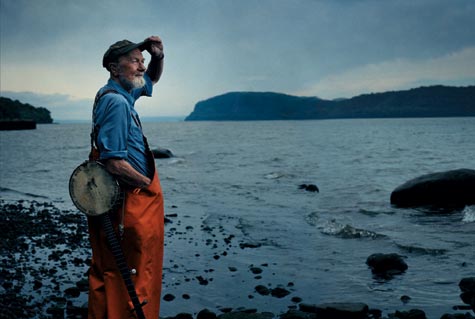 Seeger was more American than anyone I can think of…..”
Seeger was more American than anyone I can think of…..”
So, today, somewhere outside of the time we live in, Pete Seeger, the man who was so engaged in his times, is perhaps sailing down that golden river he sang about. To say this is the end of an era would be wrong. After talking with Matt Cartsonis, it is now clear, the era of Pete Seeger has just begun and if we want to see where it resides, we have only look into each other’s eyes.
Latest posts by TJ Staff (see all)
- Song premier: Brooke Graham – “Merryachi Christmas” - October 31, 2022
- Sean Devine’s Here For It All - September 7, 2021
- Video Premier: “No One Gets Pulled Over on Christmas Eve” (The Smoking Flowers) and “Santa Claus is Dead” (Dee Oh Gee) - December 22, 2020

